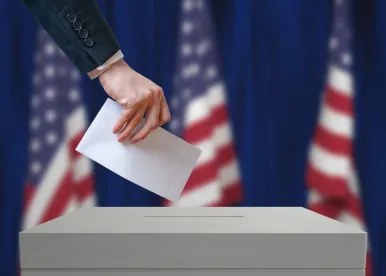If you regularly deal with union concepts, read on! Otherwise you may find this a tad wonky…
After some three years into the current administration, the NLRB (“Board”) has issued new election rules that reverse or modify rules put in place during the Obama administration. The Obama era rules, commonly referred to as the “fast track” or “quickie” election rules, were the subject of controversy and debate between the business community and organized labor prior to their becoming law in 2014. The stated policy objectives for the Obama era rules were “to simplify and modernize” the Board’s election procedures for determining employee desire for union representation, establish “greater transparency and consistency” in administration of those procedures, and provide for a more “fair and expeditious resolution” of NLRB election cases; however, the business community objected to the Obama era rules primarily because they imposed procedural and substantive limits on the types of issues that can be adjudicated in a pre-election hearing, and shortened the time frame within which such hearings were to occur.
The new rules became effective December 18, 2019. Set forth below is a summary of the more significant aspects of the new rules and how those rules differ from those previously in place.
Unit scope and voter eligibility. The new rules allow for the pre-election hearing to determine disputes regarding the appropriate scope of the bargaining unit and issues of supervisory status of one or more persons or job classifications. This is a return to the rules in effect before the Obama Administration; under the Obama era rules, disputes “concerning individuals’ eligibility to vote or inclusion in an appropriate unit ordinarily need not be litigated or resolved before an election is conducted.” Under the new rules, the regional director can decide these issues before directing an election; however, the new rules also allow the parties to agree to let disputed employees vote subject to challenge, deferring litigation concerning such disputes until after the election.
Post-election and post-hearing briefs. The right of parties to file a post-hearing brief with the regional director following pre-election hearings has also been restored and extended to post-election hearings as well. Briefs will be due within five business days of the close of the hearing, although hearing officers may grant an extension of up to 10 additional business days for good cause. Under the prior rules, briefs were permitted only upon special permission of the regional director.
Time to election. Under the new rules, the regional director will continue to schedule the election for the earliest date practicable, but absent waiver by the parties, normally will not schedule an election before the 20th business day after the date of the direction of election. This period will permit the Board to rule upon certain types of requests for review prior to the election. This is largely consistent with the Board’s procedures prior to the 2014 Obama-era amendments, which provided that the regional director would normally schedule an election 25 to 30 days after the issuance of the direction of election.
Ballot impoundment. When a request for review of a direction of election is filed within 10 business days of that direction, where the Board has not ruled on the request, or has granted it, before the conclusion of the election, ballots whose validity might be affected by the Board’s ruling on the request or decision on review will be segregated and all ballots will be impounded and remain unopened pending the ruling or decision.
A party may still file a request for review of a direction of election more than 10 business days after the direction, but the pendency of that request for review will not require impoundment of the ballots. This is a partial return to the Board’s procedures prior to the 2014 amendments, which removed the provision for automatic impoundment.
Other key changes. The Board’s final rule makes several other key changes:
-
The pre-election hearing will generally be scheduled to open 14 business days from notice of the hearing; regional directors will have discretion to postpone the opening of the hearing for good cause. (The pre-election hearing was scheduled to open eight calendar days from the notice of hearing under prior rules).
-
The employer will be required to post and distribute the Notice of Petition for Election within five business days after service of the notice of hearing. (Prior rules required posting and distribution within two business days).
-
Non-petitioning parties will be required to file and serve the Statement of Position within eight business days after service of the notice of hearing; regional directors will have the discretion to permit additional time for filing and service for good cause. (Previously the Statement of Position had to be filed and served one day before the opening of the pre-election hearing—typically seven calendar days after service of the notice of hearing).
-
The petitioner will need to file and serve a Statement of Position on the other parties responding to the issues raised by any non-petitioning party in a Statement of Position. The responsive Statement of Position will be due at noon, three business days before the hearing is scheduled to open—three business days after the initial Statement(s) of Position must be received; timely amendments may be made on a showing of good cause. (The petitioner was previously required to respond orally to the Statement(s) of Position at the start of the pre-election hearing.)
-
The employer has five business days to furnish the required voter list following the issuance of the direction of election. (The employer had only two business days to provide the list under the prior rule.)
-
In selecting election observers, whenever possible a party will select a current member of the voting unit; when no such individual is available, a party should select a current nonsupervisory employee. (The prior rules simply provide that parties may be represented by observers.)
-
The regional director will no longer certify the results of an election if a request for review is pending or before the time has passed during which a request for review could be filed. (Regional directors were previously required to certify election results despite the pendency or possibility of a request for review; in cases where a certification issued, requests for review could be filed up until 14 days after the issuance of the certification.)




 />i
/>i

